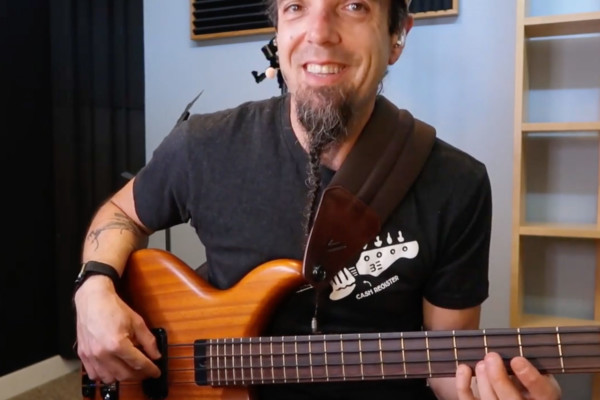Setting Up Your Bass
Q: Do you set up your instruments? If so, What do you strive for?
A: (This article will also appear in a future issue of Bass Guitar Magazine UK in the midst of many more on the topic from other players)
The overall playability of my instrument is everything to me. If I have to fight the feel of my bass, I’ll have a harder time “letting go” and immersing myself fully into the music because I’ll be thinking about my instrument. I generally do my own set-up (although I leave the fret jobs and real repair work to the pros).
Here’s what I try and accomplish when I set up a bass:
String height is about an 1/8th inch above the fretboard, at the 24th fret. I generally get the strings as low as I can to still pluck hard without rattle or fret noise. It’s important to me to make sure that all strings are a consistent height. The more even, the more playable.
I raise my pickups (and ramp, if I have one) to be about 1/4 of an inch below the strings. I use the pickups as my playing surface most times. I like to be able to dig in enough to get some real meat of my fingers in there, but not so much that I have to overwork my right hand. I generally play with a light touch (helps facilitate facility!)
I generally like my necks as straight as possible with maybe a slight bit of relief near the nut. The straighter the better, though.
Intonation will never be perfect across the board, but I’ll use a tuner to get the bass in tune with harmonics on the 5th and 7th frets and then compare my E strings 5th fret to my A strings 19th fret harmonic and continue that across the board, trying to get it as close as possible.
It really boils down to personal preference, but I’ve found what feels best works best for me as a player. I also prefer a narrower string spacing on extended range basses. I use 16.5mm spacing on my 6-strings and standard spacing on my 4 strings.
I also use Nickel strings (D’Addario med-light guage) as they are a little slicker feeling than steel as well as sounding warmer.
Don’t be afraid to experiment with the feel of your bass but DO make sure to consult someone before tweaking your own neck relief. One can really do a number on their instrument by cranking away on that truss rod without knowing what they’re doing! Also pay attention to the sound of your instrument. Raising and lowering strings/pickups changes the sound of your instrument!
Have a question for Damian? Ask him!
Have a question for Damian Erskine? Send it to [email protected]. Check out Damian’s instructional books, Right Hand Drive and The Improviser’s Path.




Good stuff, but I personally don’t have even string height – I have my G/D strings 2mm from the last fret, my A string 2.5mm, and my B/E strings 3mm. I say ‘last fret’ because I find the less frets, the larger the fingerboard radius, which requires slightly higher action – conversely, the more frets, the flatter the fingerboard, so the lower you can go. I like my neck to be die straight, allowing a shimmer of light to shine through the space between the string and the fret when pressing the 1st and 21st frets at the same time.